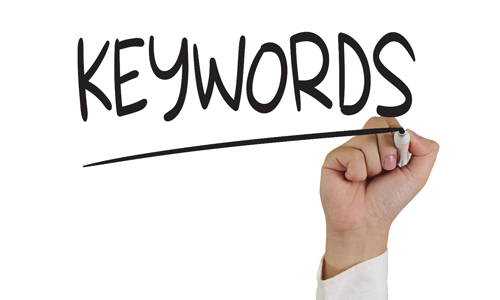Ecommerce SEO: Quick Wins for the Holiday Season

Ecommerce SEO comes with a unique set of challenges. Regularly changing product inventories, dynamic pages and duplicate content are just a few of the common headaches associated with large ecommerce stores.
Today we are going to look at some tips for keeping your ecommerce store in optimal SEO shape as well as covering a few quick wins that may give you a boost this holiday season.
Building a Foundation

No matter what you are trying to optimize, keyword research is where it all begins. Finding the right set of keywords can be the difference between overwhelming success and complete failure. If you are not highly proficient in keyword research (even if, how about a refresher?) you should start by checking out our earlier keyword research guide here on Website Magazine. Aside from the Google Keyword Planner, you keyword research should include tools like:
- SEMrush for Competitor Keyword Research
- Google Auto Suggest & Related Searches
In addition, visiting popular forums in your niche or Q&A sites like Quora can offer valuable insight into what your customers are searching for.
Quick Win- If you have strong pages on your site ranking for your primary terms, use the tools above to identify long-tail variations that you could quickly rank that page for as well. These long-tail terms can add up to a lot of traffic and can rank within a few days, sometimes through on-page changes alone.
Finding and Eliminating On-Page Issues
Sometimes a few small on-page errors can be the difference in page 1 and page 2 placement. If you do not have a regular audit schedule for your website, take the time to run one and you may be surprised at all the easy wins it will uncover. When we talk about on page issues, we are referring to one of four areas:
- Content Issues
- Structural Issues
- Speed Issues
- User-Experience Issues
Within those four categories there can be a variety of issues, let's take a look at some of them.
Ecommerce Content Issues
One of the earliest and most common content issues with ecommerce stores is duplicate content. Often, the issue is caused by someone copying and pasting product descriptions from other sites. This can be eliminated by writing unique descriptions for each of your products, if you have a lot and cannot re-write them all, start with the most valuable (e.g. best sellers). Depending on the severity of your issues, you may even want to set some duplicate pages as "no-index" until you have time to resolve the issues.
The other cause of duplicate content can be more technical in nature. For example, if your site generates dynamic URLs when someone searches for a product, Google could index the original URL and the dynamic URL, creating a duplicate content issue. To avoid this is it recommended that you use Canonical tags or in some cases, 301 redirects are used to control duplicate content issues. If you are more experienced, you may consider adding directives to the robots.txt to dictate how your site is crawled and indexed.
Structural Issues Hurting Ecommerce Sites
When building any site it is important that you create a clear hierarchy for the site, this is even more important when talking about large ecommerce sites. When planning the site layout, you will need to decide if you want a flat or deep site, and if you want strict silos or interlinking content.
Traditionally, SEOs were trained to use strict silos when building sites and this practice is still in use today on sites like about.com. Since that site covers many unique topics, it is a good candidate for siloing, a site with a tighter focus on a single product or product line may choose to interlink pages instead of using the silo technique.
Additionally you should identify topics or top-level category pages that will remain consistent so that you can create pages on your site that have trust and authority, these are sometimes called "power pages" or "anchor pages." Here is an example:
Let's say that you sell Hublot watches. The top-level page for that would be something like:
https://www.swissluxury.com/hublot-watches.htm <- Anchor Page that does not change
Subpages would be for specific models, such as:
https://www.swissluxury.com/hublot-watches-big-bang-41mm-black-ceramic.htm <- product pages to be linked from anchor page.
https://www.swissluxury.com/hublot-watches-mp-05-laferrari.htm
While a long-tail keyword strategy would suggest your link to the above two pages, a "power page" approach would focus on linking to the top-level page. Since that page is not likely to change, you can build continual link equity to that page and internally pass that equity to subpages like those listed above.
Deciding which of the two approaches to use depends upon how frequently your products change and your marketing budget.
Quick Win: Create a power page on the topic of your most popular item or group of items. Use Buzzsumo to create a list of people linking to similar pages and email them to let them know about your new page. If you have created a good one, people will link to it and you could get a quick ranking boost this holiday season.
Speed Issues - Ain't Nobody Got Time for That!
Users expect a website to load fast (under 2 seconds) and if a site fails to meet that expectation, lost traffic and sales will be your punishment. While the need for speed isn't new, there are a lot of sites, especially in the ecommerce industry that are not up to par.
It All Starts with Hosting
There are several tutorials for increasing the speed of websites but many of them fail to mention the value of having a great hosting provider. The platform you are going to build your site on should be your first decision and then you should find a hosting services that works well with that platform. For example, if you are using WordPress with Woo Commerce, you may consider hosting the site with WPEngine, who specialize in WordPress hosting.
Add a CDN into the Mix
In addition to using a great hosting service, using a content delivery network (CDN) can also provide a noticeable boost in loading times. This is accomplished by distributing site traffic to several servers automatically based upon their location or which server is best suited to handle the request. Using a CDN is also a good way to decrease the impact of or prevent a DDOS attack on your site.
Front-End Optimization
Techopedia defines FEO as: "Front-end optimization (FEO) is the process of optimizing the delivery of website resources from the client side." Put simply, it is the process of reducing the number of "trips" that must be made to the server when rendering a Web page. This is done using a variety of methods such as taking advantage of caches, compressing content with plugins like Gzip, and through the use of sprites to group information.

Quick Win: Run a speed test on your website. Look for FEO and back-end optimization (BEO) opportunities to increase your loading times as improving website speed correlates to increased conversions.
User-Experience Issues
Even if you have found the best keywords and your site loads in a flash, your hard work will be for not if you fail to deliver a good user experience.
What is a Good User Experience?
When someone visits your website they do so to fulfill a need. It may be to gain information, purchase a product or request a demo of your software. Regardless of why a person comes to your site, it is your job as the site owner to allow them to find the information they are seeking as easily as possible. In order to do so, you should provide users a clear path to follow through your website, but it starts before they ever arrive.
When you are selecting keywords in the planning phase of your website build you should segment terms into information and transactional terms, doing so will allow you to shorten the users journey to the information they are seeking. Once you have fulfilled their need for more information, you should direct them to the next step, commonly to make a purchase or request additional information.
In short, your website should deliver on the following expectations of the user:
- Allow them to easily find what they are looking for.
- Give them direction, nobody likes to be lost.
- Be responsive to any device type - mobile friendly is a must!
- Don't be annoying - avoid "forcing" users to take an action they don't want to make.
- Personalized to user - personalization is happening throughout the digital marketing realm. Providing a personalized experience can be as simple as building pages to meet the needs of your target persona or can be more advanced, using cookies, past user data, and personalized navigation.
Quick Win: Ask yourself: Is my website showing people a map to their destination? If not, simply rearranging a few pages and changing how your call-to-actions are worded can benefit you and your site visitors.
Over to you
What is one quick and simple change you have made that positively impacted your website performance? Any horror stories? Tell us about them below!









